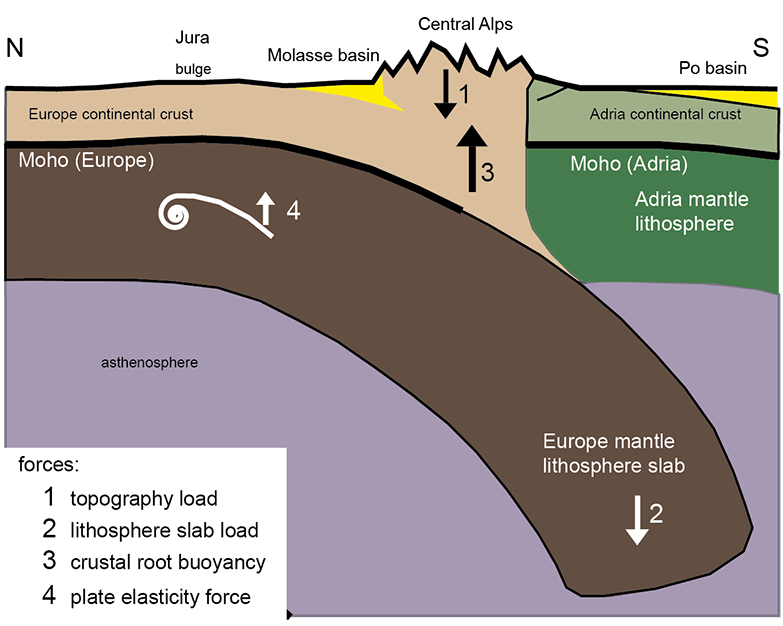2018-04-18
Alpine orogeny: Did the mountains form after ballast was jettisoned, rather than after being squeezed up in a collision between tectonic plates?
A recently published new model of the Alpine orogeny suggests that the rocks comprising the Alps rose to form a mountain range because they broke free of the heavier lower layer of the subducting European plate. This is the theory proposed by Edi Kissling from the Institute of Geophysics at ETH Zurich and Fritz Schlunegger from the Institute of Geological Sciences at the University of Bern. Previous assumptions were based on the hypothesis that the Alps were pushed up when two tectonic plates, the Adriatic in the south and the European in the north, collided. However, various recent geophysical and geological findings contradict the old bulldozer model.
Read more...The rigid rocky shell of the Earth - the lithosphere - is divided into plates that float, like rafts, on the viscous mantle beneath. These plates consist of two layers, the crust on top and the so-called mantle lithosphere underneath. The crust provides uplift and prevents the heavier mantle lithosphere from sinking into the mantle. The oceanic parts of lithospheric plates have a far thinner crust than the plates' continental parts. This makes them far less buoyant, so in so-called subduction zones the oceanic lithosphere can sink as a whole in the mantle and thereby help to push the continental part of the plate across the Earth's surface.
When the Alpine orogeny began, such a subduction occurred, when the former oceanic part of Europe was pushed underneath the Adria/African continent further south. After the whole ocean was subducted, the two continental lithospheric plates collided, much like two rafts might do. According to the previous orogenic model for the Swiss Central Alps, the collision between the two continental plates pushed together the rock material between them, causing it to surge upwards.
But recent geophysical data on the deep structure of the Alps and geological findings about how the Swiss Mittelland (or Swiss Plateau) arose indicate that this coming together, if anything, only played a very minor role in the formation of the mountain range. Instead, the Alps were pushed up to form mountains because the continental crust had freed itself from the heavy lower layer of the subducting European plate. This gave the crust, which is up to 60 km thick, tremendous additional uplift, and it has easily borne the weight of the mountains ever since, similarly to the way in which icebergs float on water. The greater uplift of the continental crust is constantly compensating for the height of the mountain range, which would otherwise decrease through erosion processes. Rivers and glaciers shape the mountains by carrying away soil and depositing sedimentation in the foreland basin, previously on the Swiss Plateau and today in the Po Valley.
So the concepts looming largest in the new model on the formation of the Alps are the floating tectonic plate's gravitational (and thus vertical) forces. This differentiates the model posited by the two authors from the previous bulldozer model, in which horizontal forces predominate.
Publication: "Rollback orogeny model for the evolution of the Swiss Alps", Tectonics, 2018
Further information: Edi Kissling, Fritz Schlunegger
